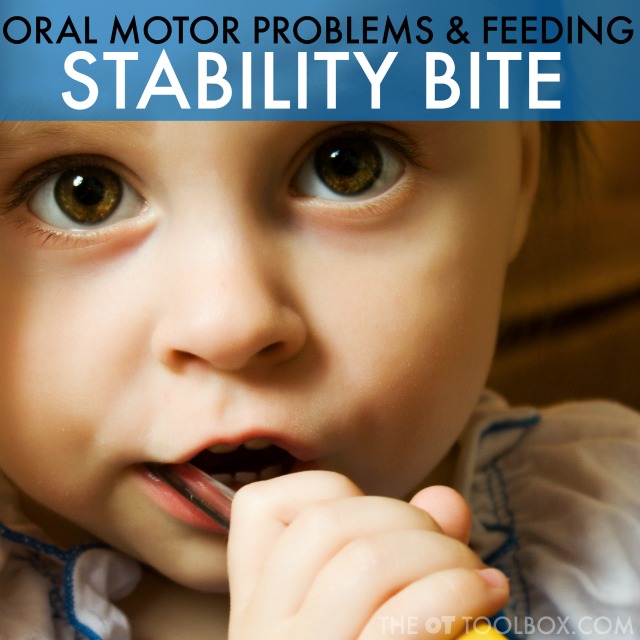You may have seen the series of oral motor posts here on The OT Toolbox. All of these oral motor issues and additional resources are described on this oral motor problem post where you can check out common oral motor issues that interfere with eating and drinking like jaw clenching, jaw instability, jaw clenching, exaggerated jaw movements, and jaw thrust. The information below is related to stability bite oral motor problems.
Stability Bite Oral Motor Problems
Start by reading more about development of oral motor skills.
When presented with a spoon, fork, cup, or straw, the child exhibiting a stability bit tightly bites down in order to gain stability in a voluntary manner. They are able to voluntarily open their mouth unlike jaw closure.
A stability bite occurs because of several reasons:
- Low muscle tone
- Poor posture
- Fluctuations in muscle tone
- Poor control of the jaw
- Poor or inconsistent proprioceptive feedback from the jaw
- Poor graded control of jaw movements
- Lack of experience with biting and chewing exploration
Feeding issues related to a stability bite
- When kids present with stability bite, eating and drinking are not efficient.
- Rhythmical eating and drinking can result.
- It is possible for a pattern of internal jaw instability to develop with continued use of external stability that a stability bite provides.

New Feature...DOWNLOAD THIS POST AS A PDF! CLICK HERE







